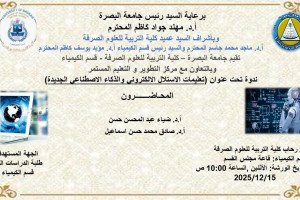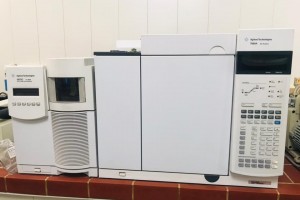
The College of Education for Pure Sciences in the Department of Physics discussed a master's thesis on the effect of the laser field on the process of electron transfer through the (NM-QD-NM) system. The thesis presented by the researcher (Mohammed Kanaan Mohammed) included the presentation of the construction of a mathematical model for studying the effect of a laser field directed at a quantum dot (QD) placed between two non-magnetic poles (nan-magnetic leads (NM)), a left pole and a right pole (right and left leads), where the left pole interacts with the quantum dot via the symbol v_Ld and the right pole interacts with the quantum dot via V_Rd, as the quantum dot is connected to the poles. The aim of the thesis: In our study, a mathematical model will be built to study the effect of a laser field directed at a quantum dot placed between two non-magnetic leads, where the model is derived based on the Anderson-Nuns model, and then the model is calibrated to obtain acceptable physical solutions, and the system properties are examined by calculating the electronic properties of the system (density of states) and the extent of the field's effect. The laser is directed at it, in addition to the effect of the gate voltage, calculating the current passing through the quantum dot, the differential conductivity as a function of the bias voltage in the presence of the laser field in order to understand the functional properties of the system.
The thesis concluded
Building a mathematical model describing the state of a system consisting of a quantum dot coupled to two normal (non-magnetic) poles and in the presence of an external laser field, where a formula was obtained to calculate the workload and current in the presence of the laser field.
The laser field can be used by changing its frequency to determine the type of solutions that can be obtained, whether they are magnetic or non-magnetic.
By changing the exposure resulting from the laser field, new peaks can be obtained in the density of states curve and the differential conductivity curve, and thus the functional properties of the system can be obtained.
By changing the gate voltage, we did not obtain new results except for shifting the beam towards the positive energy values of the system.









